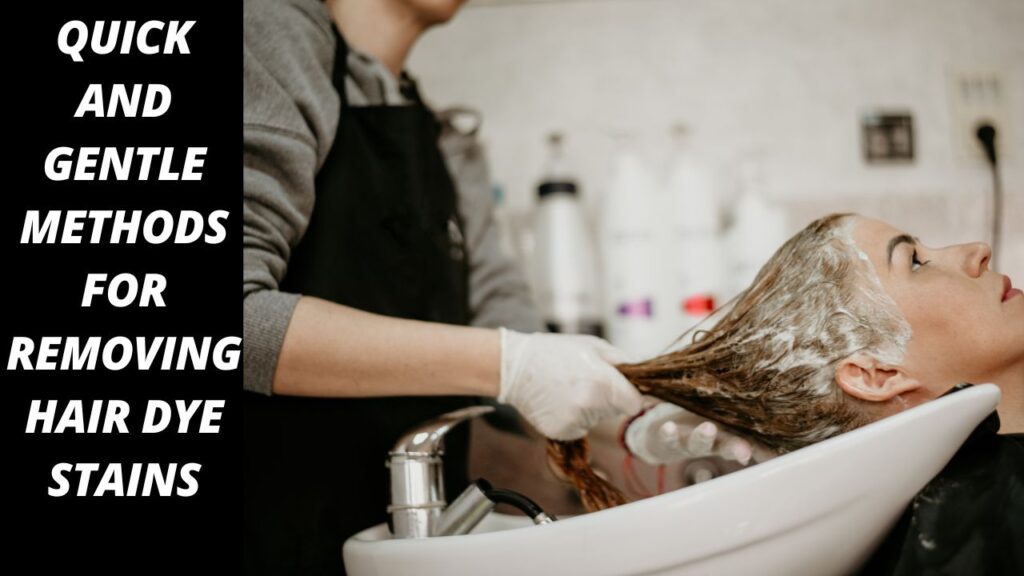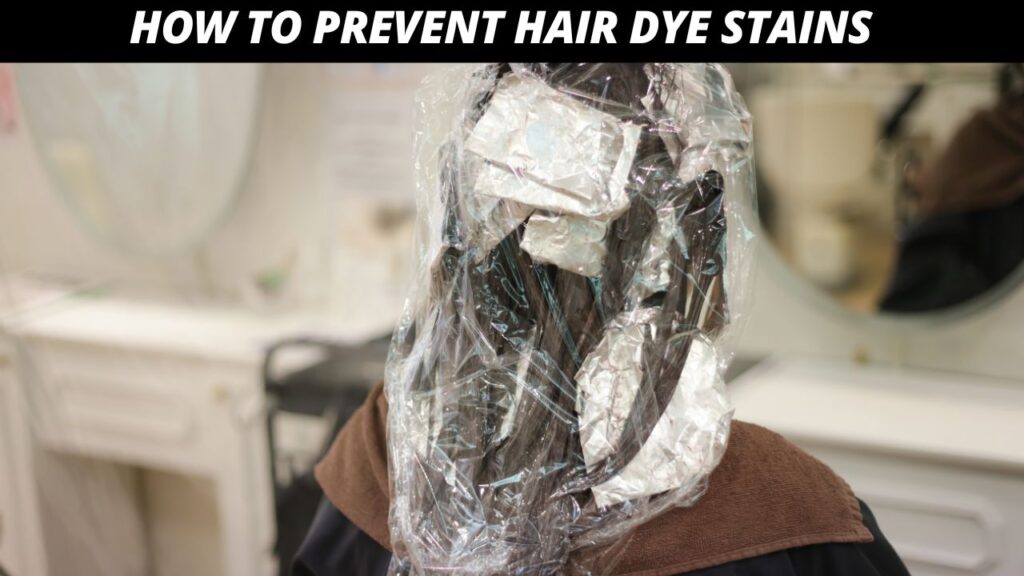Rubbing alcohol is drying to the skin, so don’t scrape hard while using it. Dampen a cotton ball and gently touch areas with stubborn stains. And of course, keep rubbing alcohol well away from sensitive regions like the eyes. Giving How to get hair dye off skin in 2024
Hair dye, particularly when applied at home, typically causes stains on the skin owing to its rich hues and enduring consistency. The skin’s inherent oils and dryness level may also make dye removal problematic, since it can attach to drier skin more easily than oily skin types.
Prevention Tips to Avoid Dye Stains
To avoid dye from coloring your skin the next time you color your hair, try one of the following: Wear gloves to help protect your hands. Apply a barrier between your hairline and your hair. Try putting a thick line of moisturizing lotion, petroleum jelly, or lip balm along the hairline before applying the color.
Here Tips to Avoid Dye Stains
- Apply a barrier
- Wear gloves
- Wipe up spills
- Avoid showering before dyeing:
- Use a headband
- Use an old towel
How Do Hair Dye Stains Occur?
Hair dyes are constructed of long-lasting substances — such colorants, ammonia, and peroxide — meant to keep your hair vivid for lengthy durations.
When these substances make contact with your skin, they might leave stains that may be difficult to remove owing to their strength. These stains may appear when:
- The dye comes into direct touch with the skin during the application procedure, such as around the hairline, ears, and neck
- The dye drops into your skin or is mistakenly transferred to the skin with the hands or application instruments
Once on the skin, the dyes may penetrate the surface and create a stain. You can also be more prone to hair color stains if your skin barrier is already weakened by sun damage, acne, or disorders like eczema.
Quick and Gentle Methods for Removing Hair Dye stains
- Soap and Warm Water: Start with a light cleaner and warm water, which may efficiently remove minor stains, particularly if treated shortly after color application.
- Makeup Remover or Micellar Water: These are mild and excellent for removing persistent stains from delicate skin regions, such the face.
- Baking Soda and Dish Soap Paste: Mix a tiny quantity of baking soda with dish soap to form a mild paste, which works well for harder stains. Rub it over the skin in circular movements, but avoid putting it on highly sensitive regions such around the eyes.
- Olive Oil or Coconut Oil: For delicate skin, oils like olive or coconut oil give a mild but efficient approach to remove color stains, enabling the dye to be washed away without discomfort.

Tips for Sensitive Skin and Safe Dye Stain Removal
When removing hair color stains, you should follow the right ways to safeguard your skin from additional harm. These may include:
- Avoiding harsh, common home goods, including nail polish remover, bleach, or other chemicals that may irritate or burn the skin
- Avoiding over-scrubbing helps maintain your skin barrier and limit the likelihood of breakouts
- Using delicate circular movements while applying removal products
- Patch testing removal products on a little portion of skin to minimize discomfort on a bigger area
- Following the product directions attentively to ensure safe use
- Trying home methods for stain removal first
- Using these strategies will help you properly manage hair color stains without the danger of harming your skin.
How to Prevent Hair Dye Stains
Preventing hair dye stains is relatively basic. Implementing these basic preventive procedures may go a long way in keeping your skin stain-free:
- Wear safety gear — such as disposable gloves and a salon that — before handling hair coloring
- Apply a barrier of cream or petroleum jelly over the forehead, ears, and neck to prevent the dye from infiltrating the skin
- Keep a moist cloth or paper towel nearby to swiftly wipe away any color that gets on your skin
- Regularly check for and mop up spills throughout the dyeing process to avoid persistent stains
- Use a precise dye brush for more controlled application and to assist you prevent unwanted skin contact
Section your hair to assist you get a consistent hair color and decrease the danger of accidental spills on your skin

Avoid Harsh Scrubbing and Strong Chemicals
Dermatologists recommend against using harsh chemicals, such acetone-based nail polish removers, or abrasive washes, which may disrupt the skin’s natural barrier, leading to inflammation and sensitivity. Instead, they offer moderate, skin-safe solutions like oils, makeup remover, or just waiting for natural skin oils to gradually lift the stain over time.
